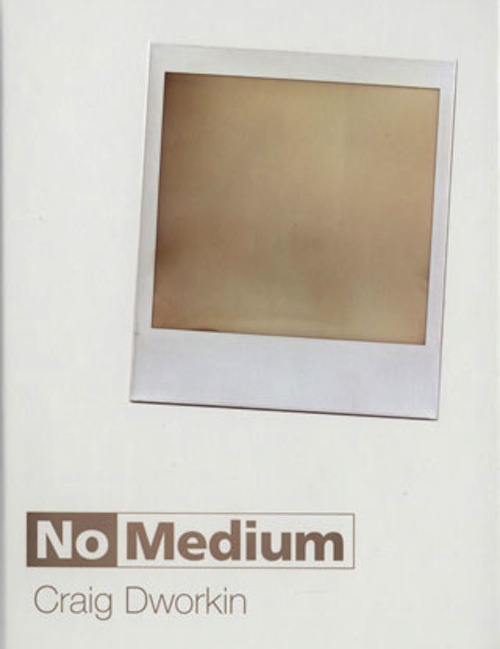Michael Leong on Craig Dworkin's No Medium

At Hyperallergic, Michael Leong reads Craig Dworkin's No Medium, published in March by MIT Press. According to press materials, Dworkin "looks at works that are blank, erased, clear, or silent, writing critically and substantively about works for which there would seem to be not only nothing to see but nothing to say." Leong notes that the statement is "a bit misleading regarding Dworkin’s argument as well as the actual nature of his objects of study (some of the treated works, such as John Cage’s 4 ‘33″ and Robert Rauschenberg’s White Paintings, are well known while many others are not); and it risks obscuring, to some extent, the host of wonderful subtleties, the wily interpretive moves and maneuvers that can be found within the book itself." Textual works are also discussed:
Furthermore, there are many works discussed in No Medium that are only partially blank, empty, or erased, staging a confrontation between something and nothing, inscription and unwritten emptiness. Chapter 3, entitled “Textual Prostheses,” for example, treats works that present paratexts without texts: Jennifer Martenson’s long poem “Xq281,” Jenny Boully’s essay “The Body,” and Paul Fournel’s novel Suburbia, among others. What is surprising, in the context of this book, is how much there is to see and read in these works. Page 5 of Fournel’s Suburbia, a “novel” which consists of an elaborate framing structure (including a table of contents, a foreword, footnotes, and afterword) without the body, is, from a certain perspective, far less “blank” than any given page of, say, George Oppen’s Discrete Series, which, as it is collected in the New Directions edition of New Collected Poems, gives each short poem of the series a full page to itself.
According to Dworkin, “most” of these works “tend toward a rather sloppy, indulgent eclecticism.” Yet the presence of this chapter within No Medium constitutes an eclectic inclusion in itself. Writers such as Martenson, Boully, and Fournel seem to be set up as straw (wo)men, and their works are perhaps more interesting in the context of genre rather than media.
Dworkin, then, may be at his best when interpreting works in which there is as little expressive content as possible. This allows him, like a good detective, to make sense of the most inconspicuous detail and to present creative synchronic and diachronic contextualizations; it also allows him to make productive and surprising connections across disparate disciplines....
Read more on the "Nothings that Are" here.


